The ongoing destruction of what remains of the Islamic State in Iraq and Syria is more of a process than a series of discrete battles at this point. A story I’ve been watching develop the last few weeks has finally achieved fruition: The complete elimination of the large, thinly-populated Islamic State enclave in eastern Syria along the Iraqi border.
This was the situation at the start of Operation Jazerra Storm:
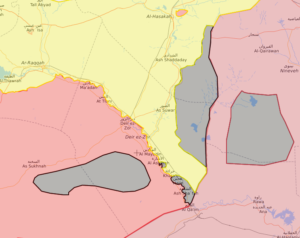
Here it was two weeks ago:
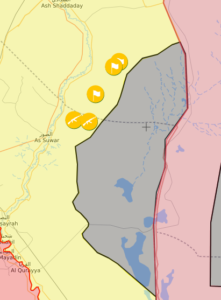
A tweet featuring a map of the operation a few days ago:
SDF secured Hasakah governorate, entered Deir ez Zor, reaching Buwara Saltpan
From the west captured oilfields and most recently Fulaytah, 14km from Buwara; Rawdah saltpan will be surrounded
From the south forces in Baghuz advance north to Thahrat Allouni
Source @VivaRevolt pic.twitter.com/kwQ3vL7KQT
— SyriaInfo (@syria_map) July 24, 2018
(And yes, those blue areas near the Syria-Iraq border on the Livemap are salt plains, not bodies of water.)
Now the pocket has been completely cleared:
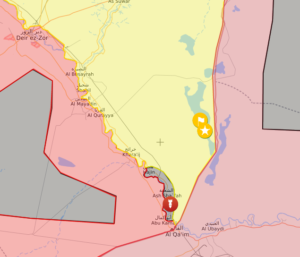
The hard nut of the Hajin pocket has yet to be cracked, but that should be next on the SDF list, since the the Islamic State has been completely driven from the rest of Syria east of the Euphrates.
More news of the war against the Islamic State:
The US-backed Syrian Democratic Forces (SDF) are holding talks with the government in Damascus for the first time on the future of huge swathes of northern Syria under their control.
The Kurdish-majority SDF, founded with the help of the US to fight Islamic State of Iraq and the Levant (Isil) in northeastern Syria, now controls almost a third of the country and is looking to negotiate a political deal to preserve its autonomy.
“We are working towards a settlement for northern Syria,” said Riad Darar, the Arab co-chair of the Syrian Democratic Council, the SDF’s political wing.
“We hope that the discussions on the situation in the north will be positive,” Mr Darar said, adding that they were being held “without preconditions”.
The SDF now controls 27 per cent of the country, accord to the UK-based monitor Syrian Observatory for Human Rights, having seized Raqqa and much of the eastern province of Deir Ezzor from Isil militants with the help of US airpower.
The Kurds have used the cover of the Syrian war to carve out a semi-autonomous enclave in the northeast of the country, which it calls “Rojava”.
Rojava is also known as the Democratic Federation of Northern Syria.
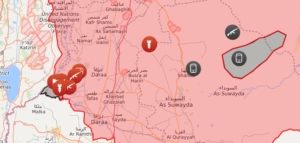
The Yarmouk Basin pocket is one of three pockets of Islamic State control west of the Euphrates. There’s another large, sparsely populated pocket northeast of there, where the Islamic State is active enough to still commit atrocities, and the large, sparsely-populated pocket immediately to the west of Deir ez-Zor.
Likewise in Iraq, there are only two pockets of Islamic State control left: A large, sparsely-populated area east of the Syrian border in northwest Iraq, and a tiny sliver of land between Tikrit and Al Fatah Air Base.
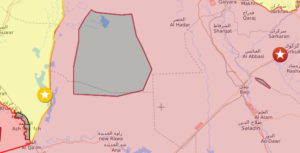
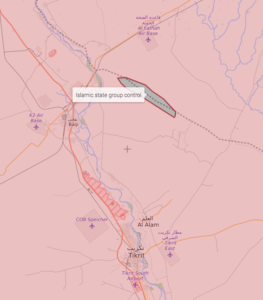
That little sliver has been static for months, with no fighting indicated, so it may just be a map artifact, or an area no one has been able to verify if it’s liberated or not. Keep in mind that the Iraqi government declared that the Islamic State was defeated in Iraq back in December, but counterinsurgencies tend to take time. Espicially counterinsurgencies against Islamic terrorists. It took 14 years to end the original Moro insurgency in the Philippines, and some would argue that it was never entirely eradicated…
Tags: Al Masdar News, Bashar Assad, Damascus, Deir ez-Zor, Democratic Federation of Northern Syria, Golan Heights, Hama, Homs, Iraq, Islamic State of Iraq and Syria, Jazerra Storm, Jihad, Jordan, Latakia, Middle East, Military, Rojava, Syria, Syrian Democratic Forces